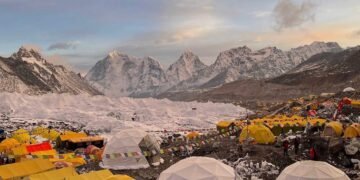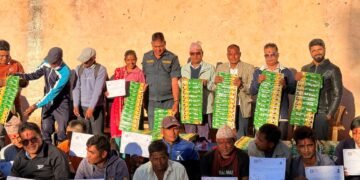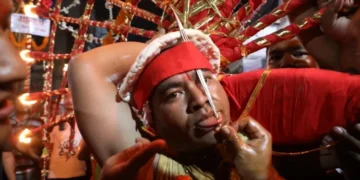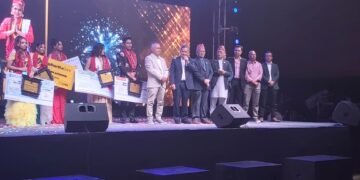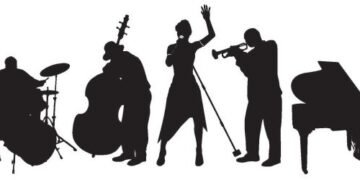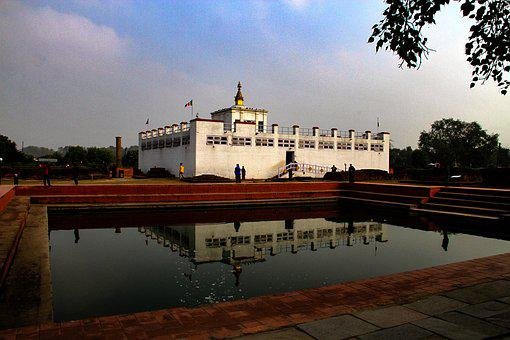‘Om NamohBuddhaya, NamoDharmaya, NamoSanghaaya, NamoRatnaTriyaya, JaagatSatwaHitaya’
This form of spiritual and sacred dance is performed only in certain part of the world by specific people/devotees. Introducing you to Mr. Chandra Man Munikar who is one among such fewer devotees to perform CharyaNritya. This dance is a manifestation of universal brotherhood and an alarm for world peace. This dance is performed together with sacred Buddhist hymns and spiritual frequencies which addresses every Gods and Goddesses for the purpose of peace and happiness. This dance consists different expressions, feelings, and movements which contemplate with the energy and existence of different forms of different Gods.
This dance is related to every parts of a day and announces for the realization of supreme power into the one of every human heart. Precisely, this dance is pre-historic which has the history beyond the account of time. The dance never ends because it is more like a dedication towards a godly gravity which is assimilated in every human life.
Charya means time and in a bigger picture, Charya indicates an era. This dance, therefore, signifies the start and the end. This dance acknowledges five fundaments of cosmos which includes sun, water, sky, air and fire. Charya is nature which underlies in every human heart and forms human behaviours. So, Charya dance apparently realizes the proximity between god and human.
What is CharyaDance ?
CharyaNritya is a method of deity yoga that integrates body, speech, and mind techniques. It is a meditative discipline that involves physical training and spiritual transformation. Practitioners engage in visualization, recitation of mantras, sacred hand gestures, foot movements, and yogic postures, and adorn themselves with the crown and ornaments of a deity.
It is a meditation, a vehicle of bodily and spiritual transformation, and an opportunity for audiences to experience a vision of divine beauty. The deities are described in esoteric Sanskrit songs known as charya-giti, which are sung as accompaniment to the dance. Charya-gitiare sung in a variety of raga (melodies) and tala (meters) and are accompanied by small cymbals known as ta and sometimes by a two-headed hourglass drum, or damaru. The songs begin with a flowing raga, followed by a more metrical section that includes description and praise of the deity and usually consists of changing verses and a fixed, repeating refrain. Sometimes a dharani praise invocation, or mantra, is inserted near the beginning or end.
Each dance embodies and brings forth a different Buddhist diety. The central purpose of the dance is to support the Vajrayana practice of deity yoga, or visualizing oneself as a deity. This practice involves a mental process of seeing oneself as having the
appearance, ornaments, inner qualities, and awareness of the deity one is envisioning.
The Dancing methods
Dancers convey the iconographic symbolism of deities and depict their accomplishments and supreme methods. Displaying the asanas or sculptural postures of Buddhas and bodhisattvas in trifold tribhangha stance, dancers move fluidly from one pose to another. The dance is a transcendental journey into the heart of the mandala. Through this ritual enactment and meditative experience, practitioners identify themselves with the activity, appearance, and qualities of a deity, and in doing so, cultivate wisdom, compassion, and skillful means.
Mandala, Mantra and Mudra (expressions) are the major significances of this dance. Mandala is the fundamental to start Charya. This spiritual circle states cosmic objects in it and also signifies different forms of Buddha. Later, the Dharma Dhatu mandala is established with due rituals then mantras brings soul into it. Mantras are very confidential which is transferred very secretly between the receiver and giver. Mudras are the expressions of Gods and the energy kinds. Mudras replicate the purity of god and accept the supremacy of supreme Godhead.
If there is any dance that has been advocating for the global peace since the pre-historic era then it is definitely Charya Dance.
CHANDRA MAN MUNIKAR


